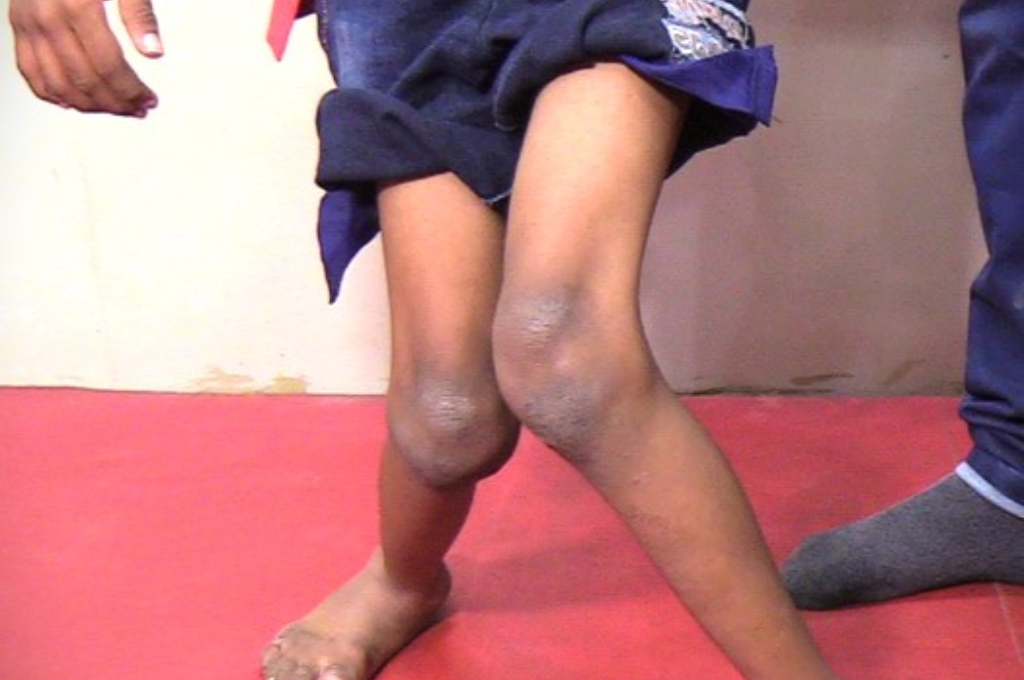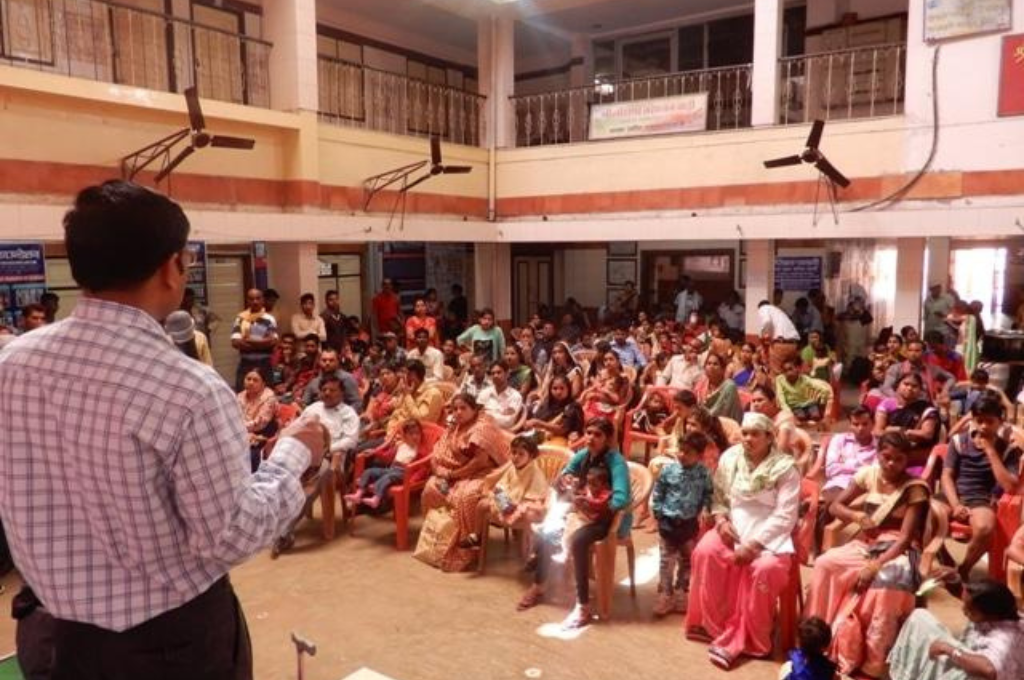Understanding Hypertonic Cerebral Palsy
Hypertonic Cerebral Palsy is characterized by increased muscle tone, leading to stiffness and resistance to movement. This subtype manifests as exaggerated muscle contractions, making it challenging for individuals to perform coordinated movements. The increased muscle tone can affect various body parts, impacting mobility, fine motor skills, and overall motor function.
Causes
Hypertonic Cerebral Palsy, like other types of cerebral palsy, is primarily caused by damage to the developing brain, often occurring before or during birth. The specific causes and risk factors for Hypertonic Cerebral Palsy can vary, and in many cases, the exact cause may not be definitively identified. However, several factors are known to contribute to the development of Hypertonic Cerebral Palsy:
Prenatal Factors:
Genetic Factors:
While most cases are not directly linked to genetics, some instances of cerebral palsy, including hypertonic forms, can have a genetic component. Genetic mutations or abnormalities may contribute to brain development issues.
Infections during Pregnancy:
Infections such as rubella, cytomegalovirus, or other maternal illnesses can increase the risk of cerebral palsy, including hypertonic forms. Drug intake, hypothyroidism, and diabetes in pregnancy can also increase the risk of hypertonic cerebral palsy in children.
Perinatal Factors:
Birth Complications:
Difficulties during the birthing process, such as prolonged labor, breech birth, or the need for forceps or vacuum extraction, can contribute to brain damage and increase the risk of hypertonic cerebral palsy.
Premature Birth:
Babies born prematurely & low birth weight babies are at a higher risk of cerebral palsy, and hypertonic forms may be more prevalent in preterm infants due to their vulnerability during crucial stages of brain development.
Postnatal Factors:
Brain Injury:
Any traumatic injury to the brain during the early years of life can lead to cerebral palsy. This may include head injuries, infections, or exposure to toxins.
Medical Conditions:
Certain medical conditions, such as severe jaundice or untreated seizures, can contribute to brain damage and increase the risk of hypertonic cerebral palsy.
Asphyxia:
Oxygen deprivation to the brain, either during birth or in the postnatal period, is a significant risk factor for cerebral palsy, including hypertonic forms.
Risk Factors:
Multiple Births:
Twins, triplets, or other multiple births may have a higher risk of cerebral palsy, including hypertonic forms, due to the increased likelihood of complications during pregnancy and delivery.
Low Birth Weight:
Babies with low birth weight, whether due to premature birth or other factors, may be at an increased risk of hypertonic cerebral palsy.
Intraventricular Haemorrhage (IVH):
Bleeding in the Brain:
Intraventricular hemorrhage, or bleeding in the brain’s ventricles, can occur in premature infants and may contribute to hypertonic cerebral palsy. It’s important to note that in many cases, cerebral palsy, including the hypertonic subtype, results from a combination of these factors. The precise cause may not be evident, and it’s often the interplay of genetic and environmental factors that contributes to the development of this condition. Early identification of risk factors, prenatal care, and appropriate medical interventions can help mitigate some of the risks associated with hypertonic cerebral palsy. Additionally, ongoing research aims to understand the causes better and develop strategies for prevention and intervention.
Symptoms
Hypertonic Cerebral Palsy is characterized by increased muscle tone, stiffness, and resistance to movement due to damage or abnormal brain development. The signs and symptoms of this subtype can vary, but they commonly involve challenges in motor function and coordination. Here’s a detailed exploration of the signs and symptoms associated with Hypertonic Cerebral Palsy:
Increased Muscle Tone:
Hypertonic Cerebral Palsy is marked by elevated muscle tone, leading to increased stiffness and resistance in the muscles. This heightened muscle tone can make movement difficult and result in resistance to passive stretching.
Spasticity:
Spasticity causes stiff and jerky movements. Spasticity in hypertonic cerebral palsy can affect large and small muscle groups, impacting mobility and fine motor skills.
Impaired Range of Motion:
The increased muscle tone can limit the normal range of motion in joints, reducing flexibility. This limitation in joint movement can make reaching, bending, and stretching more challenging.
Difficulty with Fine Motor Skills:
Hypertonia can affect the precision of movements, making tasks that require fine motor skills, such as writing or using utensils, more complex. Individuals may struggle with activities that demand controlled and coordinated movements of the hands and fingers.
Abnormal Postures:
Hypertonic Cerebral Palsy may lead to the adoption of abnormal postures due to the increased muscle tone. These abnormal postures can affect sitting, standing, and walking, impacting overall mobility and balance.
Joint Contractures:
Prolonged muscle stiffness can result in joint contractures, where the joints become fixed in abnormal positions. Joint contractures can limit movement and contribute to orthopedic complications over time.
Challenges in Mobility:
Spasticity and increased muscle tone can significantly impact mobility. Individuals with hypertonic cerebral palsy may experience difficulty walking, coordinating movements, and maintaining balance.
Orthopedic Issues:
Persistent muscle stiffness and abnormal postures can contribute to orthopedic problems, including misalignments, joint deformities, and an increased risk of fractures. Orthopedic complications may require surgical interventions to address skeletal issues.
Speech and Communication Challenges:
Hypertonic Cerebral Palsy can affect the muscles involved in speech and communication. Individuals may experience challenges in articulation, making speech less clear, and may require communication support.
Muscle Fatigue:
Constant muscle contractions and increased tone can lead to muscle fatigue. Fatigue may occur during or after physical activities, impacting overall endurance and functional abilities.
Co-occurring Conditions:
Individuals with hypertonic cerebral palsy may experience co-occurring conditions, such as seizures, sensory impairments, cognitive challenges, osteoporosis, nerve compression, etc. These additional conditions can further impact daily living and require comprehensive care and management. Understanding and addressing the signs and symptoms of Hypertonic Cerebral Palsy requires a multidisciplinary approach involving healthcare professionals, therapists, and caregivers. Tailored interventions, including physical therapy, medications, and assistive devices, can help manage symptoms and improve the overall quality of life for individuals with hypertonia. Early intervention and ongoing support are essential in optimizing outcomes for those with this form of cerebral palsy.
Treatment
Managing Hypertonic Cerebral Palsy requires a multidisciplinary approach to improve mobility, reduce muscle stiffness, and enhance overall quality of life. Our comprehensive treatment options include:
1. Physical Therapy:
Physical therapy to improve muscle flexibility, strength, and coordination. The usual combination is strength training, balance exercise, sensory stimulation, gait training, etc., and stretching & joint mobilization exercises are of not much use.
2. Medications:
Pharmacological interventions to manage spasticity and muscle stiffness. Medications may include muscle relaxants and anti-spasticity drugs. But long-term use cannot be advised. Medication is also advised to treat osteoporosis, seizure & joint pain
3. Orthopaedic Interventions:
Surgical interventions to address musculoskeletal issues, correct deformities, and prevent complications such as joint contractures. Orthopedic intervention can be a very important event for children affected with hypertonic cerebral palsy.
4. Assistive Devices:
Providing adaptive tools and assistive devices supports mobility, enhances fine motor skills, and promotes independence. Assistive devices are of great help to these individuals.
5. Speech and Occupational Therapy:
Targeted speech and occupational therapy to address communication challenges and support the development of daily living skills.
Emotional and Psychological Support
Living with Hypertonic Cerebral Palsy can impact emotional well-being. Our organization recognizes the importance of emotional and psychological support, offering counseling services and resources to individuals and their families.
Diagnosis
Diagnosing Hypertonic Cerebral Palsy involves a comprehensive and multidisciplinary approach to assess the individual’s motor function, neurological status, and overall development. The process aims to identify the characteristic signs and symptoms associated with hypertonia and to differentiate it from other types of cerebral palsy or neurological conditions. Here’s a detailed explanation of the diagnosis of Hypertonic Cerebral Palsy:
1. Clinical Evaluation:
Observation of Motor Function:
Healthcare professionals, including neurologists, developmental pediatricians, and pediatric orthopedic surgeons, conduct a thorough clinical assessment. This involves observing the individual’s motor function, muscle tone, and coordination. Characteristics such as heightened muscle tone, spasticity, and difficulties in movement are closely observed.
Neurological Examination:
A detailed neurological examination assesses reflexes, muscle strength, and coordination. Neurologists may look for abnormal muscle tone, exaggerated reflexes, and other neurological abnormalities.
2. Neuroimaging Studies:
Magnetic Resonance Imaging (MRI):
MRI scans are commonly used to visualize the structure of the brain. An MRI can help identify any structural abnormalities, lesions, or areas of damage that may be associated with cerebral palsy, including hypertonic forms.
Computed Tomography (CT) Scan:
A CT scan may provide detailed brain images when an MRI can’t be done. This imaging technique can help identify any structural abnormalities or areas of concern.
3. Developmental History:
Assessment of Developmental Milestones:
Gathering information about the individual’s developmental history is essential. This includes milestones such as neck control, sitting, creeping, crawling, standing, and walking. Delays in achieving these milestones may raise suspicion of developmental issues, prompting further investigation.
4. Differential Diagnosis:
Exclusion of Other Conditions:
Hypertonic Cerebral Palsy must be differentiated from other neurological conditions that may present with similar symptoms. Conditions such as genetic disorders, metabolic disorders, or other types of cerebral palsy need to be ruled out through careful assessment and testing.
5. Classification of Cerebral Palsy:
Identification of Hypertonic Features:
Once cerebral palsy is identified, healthcare professionals further classify the specific type, in this case, focusing on the hypertonic features. This involves recognizing the characteristic spasticity, increased muscle tone, and other associated symptoms.
6. Electrophysiological Testing:
Electromyography (EMG) and Nerve Conduction Studies:
Electrophysiological tests may be conducted to assess the electrical activity of muscles and nerves. These tests can help identify abnormal muscle tone and muscle activation patterns.
7. Multidisciplinary Collaboration:
Involvement of Various Specialists:
Diagnosing Hypertonic Cerebral Palsy often requires collaboration among specialists, including neurologists, pediatricians, physiotherapists, and rehabilitation specialists. A multidisciplinary team ensures a comprehensive evaluation and a more accurate diagnosis.
8. Ongoing Monitoring:
Regular Follow-up Assessments:
Following the initial diagnosis, individuals with Hypertonic Cerebral Palsy undergo regular monitoring to assess their progress and adjust treatment plans as needed. With the progression of age, a child may develop new problems of deformity or a decrease in functional activities, so close follow-up is mandatory before the age of 14 years in females & 16 years in males. Ongoing assessments help healthcare providers understand how the condition evolves and ensure that interventions remain effective. Diagnosing Hypertonic Cerebral Palsy is a complex process involving clinical evaluation, imaging studies, developmental history assessment, and collaboration among healthcare professionals. The goal is to accurately identify the specific type of cerebral palsy and tailor interventions to address the unique needs of individuals with hypertonia. Early diagnosis and intervention are crucial in optimizing outcomes and improving the quality of life for those affected by this condition.
Contact Us
Please get in touch with us for more information and assistance or to connect with our team. Trishla Foundation is dedicated to supporting individuals with Hypertonic Cerebral Palsy in their journey towards improved mobility, independence, and a fulfilling life.





